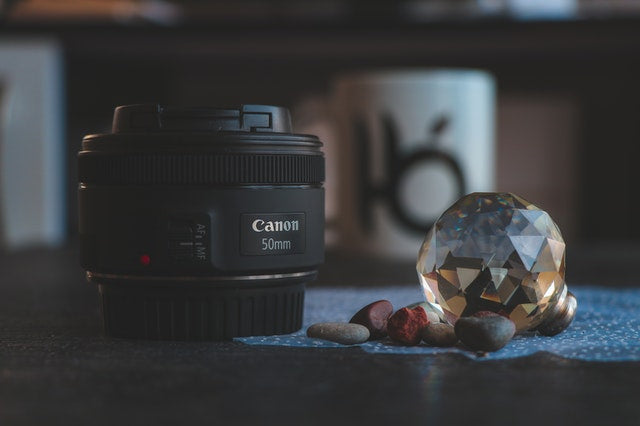"Pinked Topaz." John Ruskin encourages us to "search out and cast to the side all way of bogus or colored
or then again modified stones" in any case, regardless of his recommendation, maybe the most legitimate utilization of warmth treatment is
that which adjusts the shade of genuine topaz from a wine-yellow to a fine pink. Doubtlessly
the wine-yellow is a composite tone made out of pink and yellow and that the pink constituent
is less effortlessly changed by heat than is the yellow one. On the off chance that too high a temperature is utilized both
colors vanish and white topaz results. As the last is abundant[251] in nature and of little
esteem, such an outcome is entirely unfortunate. Pink topaz, in any case, is extremely uncommon, and up to this point,
at the point when pink tourmaline from California and Madagascar, and pink beryl (morganite) from
Madagascar, opened up in amount, the "pinked" topazes had however not many contending diamonds,
what's more, accordingly instructed a more exorbitant cost than the characteristic topazes. Obviously, care must be taken in
warming a mineral to raise and lower the temperature gradually, to stay away from unexpected and
inconsistent development or constriction, which would break and destroy the example, as the author
figured out how to his distress with the main topaz that he attempted to "pink."
Spanish Topaz. Another material that acquires a more important shading by heat treatment is the
smoky quartz of Spain, which, on being tenderly warmed, yields the supposed Spanish topaz. A few
amethysts are changed to a yellow tone by gentle warming. Too incredible a temperature totally
decolorizes shaded quartz. Some[252] dim quartz yields an almost garnet red item, after
warming.
Zircon. Slight expansion in temperature makes a large number of the zircons from Ceylon change
especially in shading. A liquor fire serves splendidly to impact the change, care being taken to
warm up the stone bit by bit and to cool it gradually. Drafts ought to be forestalled, as they
may abruptly cool the stone and break it. A few zircons become totally brightened by this
treatment. Simultaneously they increment particularly in thickness and in refractive list and accordingly
become much more smart and splendid than when shaded. One is enticed to presume that the
"space cross section" of the gem has had its layers moved nearer together during the warming and left
for all time in a nearer request of course of action. Different zircons just become lighter hued and
less appealing. A portion of the brightened stones again become pretty much hued on openness to
solid light. Bright light[253] will at times reestablish these to a fine profound shading in a short
time.
The brightened zircon, when finely cut in the splendid structure, with genuinely level features and sharp edges
furthermore, with a top point of around 39 degrees and a back point of around 44 degrees, so intently
looks like a jewel that it will hoodwink nearly anybody on easygoing assessment. The master, even,
might be hoodwinked, whenever got off his watchman. The essayist has a fine example of somewhat more than one
carat, with which he has tricked numerous gem specialists and pawnbrokers, and surprisingly a merchant or two.
On the off chance that it is introduced as a stone that intently takes after jewel your master will say: "Indeed, it is pretty
great, yet it could never trick me." If, be that as it may, you get him off his gatekeeper by recommending,
maybe, "Did you at any point see a jewel with a cleaned support?", at that point he will take a gander at it with
interest, comment on its fine tone and "make," and never consider testing its character.
The refractive file of the thick type[254] of zircon is so high (1.92-1.98) that it illuminates well
over the vast majority of the outside of the splendid when cut, as above demonstrated, and doesn't show
notably the feeble dull focus appeared by white sapphire, white topaz, dreary quartz, drab
beryl, and glue, when seen from the side. In addition, the radiance of zircon is almost firm, so
the master doesn't miss the cool metallic sparkle as he would with some other white stone. The
shading scattering, as well, is so high (86% as incredible as in jewel) that the zircon has significant
"fire," and accordingly the easygoing overseer is again beguiled. A fine white zircon is truly prettier than a
helpless jewel. It can't analyze, notwithstanding, with a fine jewel. It could never do to let an
master see your zircon close to even a reasonable precious stone. The zircon would look "tired." It is as it were
at the point when no immediate examination is conceivable, and when the master isn't dubious, that a zircon can
misdirect him. Obviously, the utilization of the logical trial of the previous exercises will, at once,[255]
identify the personality of a brightened zircon. The hardness is nevertheless 7.5, the refraction so emphatically
twofold that the edges of the back features show up twofold fixed when seen through the table with
a focal point, and the particular gravity is 4.69. Twofold spots of light show up on the card when the
daylight card test is applied. Henceforth, it is not difficult to distinguish zircon by any of these tests if there is
motivation to presume that it has been fill in for precious stone.
Corundum Gems. Rubies of dirty shading are supposed to be improved via cautious warming. Ordinarily
ruby goes through a progression of shading changes on being warmed, yet returns through a similar arrangement in
invert request on being cooled, lastly continues its unique tone. Solid warming will brighten
some yellow sapphire. The creator in this manner got a white sapphire from a precious stone of light yellow
material.
It is intriguing to take note of that the corundum pearls go through checked change in shading under the
impact of radium. A regular[256] arrangement of changes is supposed to be delivered in white sapphire by
this implies, the last tone being yellow. This tone may then be taken out by heat and the arrangement
go through once more. It isn't expressed that a fine red has at any point been along these lines gotten. Maybe Nature, by
her more slow techniques, utilizing the weak hints of radio-dynamic material in the stones, blushes the
corundum of Burmah at her recreation, lastly shows up at the much looked for "pigeon blood" shading.
It is said that the locals of India have a legend such that the white sapphires of the mines
are "aging rubies," and that one day they will develop. Maybe they are not far wrong.
Jewel. Jewels of yellowish color might be improved in shading by the utilization of high-power
radium. At present the last is so uncommon and exorbitant that there is no proof of its business use
for this reason. Researchers have achieved the change to a light blue as an investigation. It is
not yet known whether the change[257] will be lasting. Maybe here again Nature has
expected man's disclosure and made the fine pale blue violet Brazilian jewels (which fluoresce
to a profound violet under a circular segment light, and which sparkle for a couple of seconds in obscurity after openness
to light) by partner them for a very long time with radio-dynamic material. A portion of the African stones moreover
have these attributes.
Beside the adjustment of the shade of precious stone that might be achieved through radium,
the mineral is very hesitant to modify its tone. Numerous experimenters other than the creator have
attempted to no end a large group of catalysts in the expectation of discovering some approach to improve the shade of
precious stone. About the solitary observable modification that the creator has had the option to achieve was
upon an earthy colored jewel, the shade of which was made fairly lighter and more powder-colored by
warming it in a current of hydrogen gas to a low red warmth.

